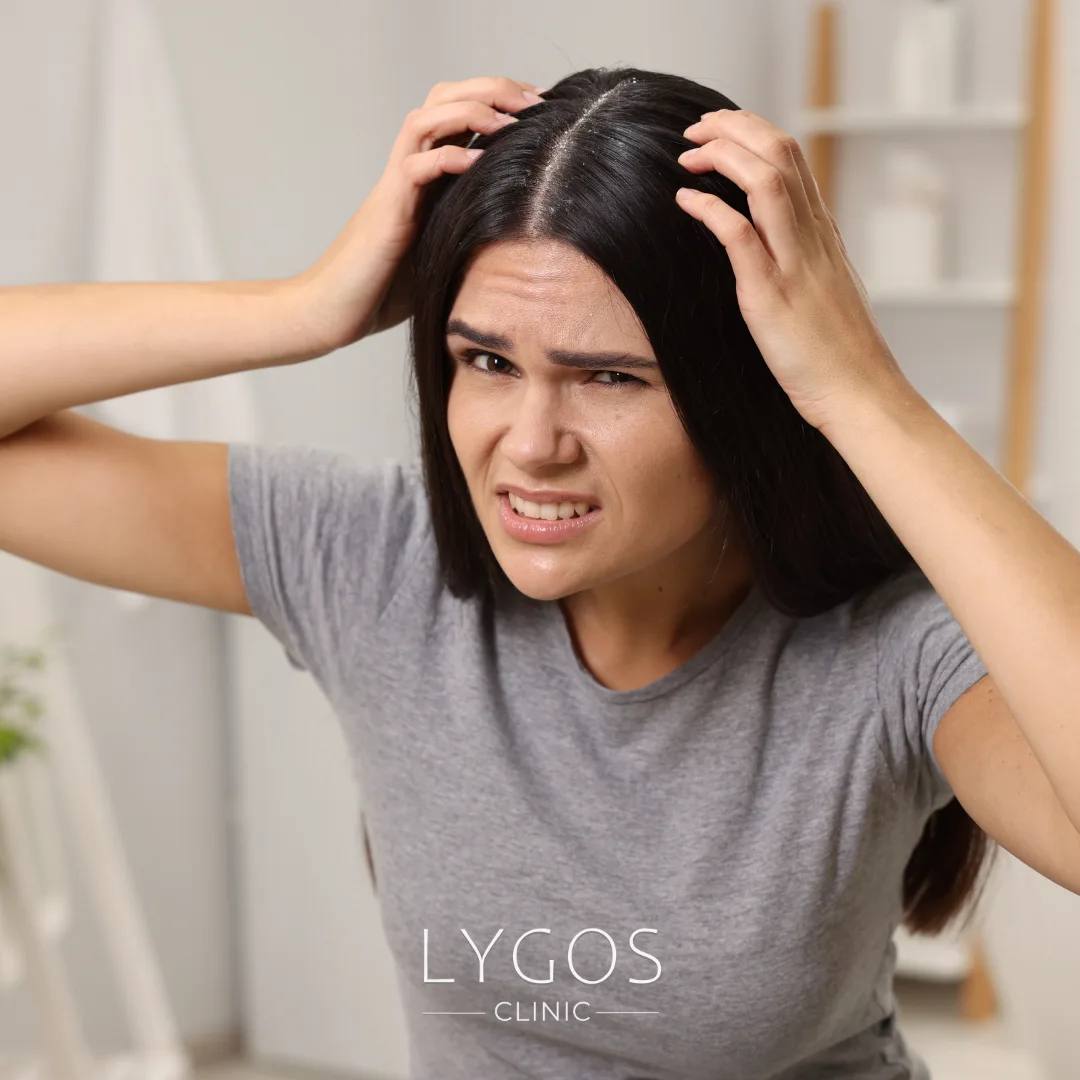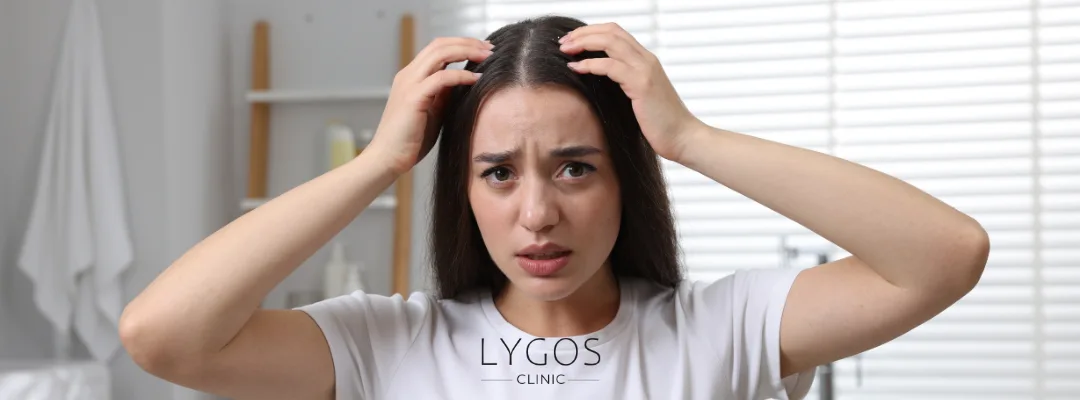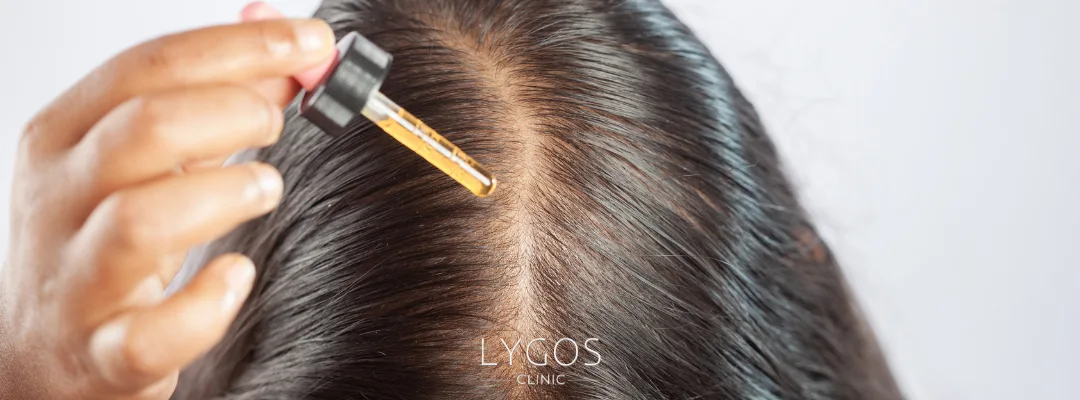Scalp Problems | Causes, Symptoms, and Solutions

Chose Your Topic
Scalp Problems
Hair health is an important factor that affects not only our aesthetic appearance but also our overall quality of life. However, before focusing on hair strands, the health of the scalp—which nourishes the hair and houses the roots—takes priority. Scalp problems can be disturbing both aesthetically and medically. Symptoms like itching, redness, flaking, hair loss, or sores can lower quality of life, and accurately identifying and treating the underlying causes is crucial.
Below, we will examine the most common scalp problems, their causes, and solutions in detail.

What Are Scalp Problems?
Scalp problems can manifest in different ways, and each has distinct symptoms, causes, and treatment methods. The most common scalp problems include:
- Dandruff: Flaking of the skin and white dandruff particles that attach to the hair strands.
- Itching and redness: Often caused by allergic reactions, eczema, fungal infections, or dryness.
- Seborrheic dermatitis: A chronic skin condition featuring yellowish flakes and itching in oily areas.
- Eczema: Appears as dry, red, and itchy patches of skin.
- Alopecia Areata (Patchy Hair Loss): Sudden, round areas of hair loss.
- Fungal infections: Can cause inflammation, dandruff, and hair loss on the scalp.
- Psoriasis: A chronic skin condition characterized by dry, thick flakes.
If left untreated, these problems can lead to permanent hair loss or severe skin disorders.
Causes of Itching and Redness on the Scalp
Itching and redness are among the most common complaints related to scalp problems. They may arise due to:
- Dry skin: Inadequate moisturizing or the use of harsh shampoos can dry out the scalp, causing itching.
- Allergic reactions: Chemicals in hair dyes, shampoos, or hair care products may irritate the skin.
- Fungal infections: Especially the Malassezia fungus, which multiplies in oily areas, causing itching and redness.
- Eczema: Characterized by redness, dryness, and itching of the scalp.
- Seborrheic dermatitis: Causes itching along with oily and yellowish flakes.
- Stress and hormonal changes: Imbalances in the nervous system and hormones can make the scalp sensitive.
Persistent itching and redness require a dermatological examination to determine the cause.

Causes of Dandruff and Ways to Treat It
Dandruff is a common scalp problem affecting a large portion of the population and is one of the most aesthetically concerning issues.
- Main causes of dandruff:
- Fungal-related: Malassezia furfur, a yeast-like fungus, disrupts the scalp’s oil balance and causes flaking.
- Dry skin: Loss of scalp moisture, especially in cold weather.
- Excess oil production: Overproduction of sebum in oily skin types triggers dandruff.
- Wrong product usage: Shampoos and hair products with harsh chemicals.
- Stress: Weakens the immune system, accelerating dandruff formation.
- Solutions:
- Medicated shampoos: Anti-dandruff shampoos containing zinc pyrithione, ketoconazole, or selenium sulfide.
- Natural remedies: Aloe vera gel, apple cider vinegar rinses, or tea tree oil.
- Scalp care: Regular massage to improve blood circulation.
Eczema and Seborrheic Dermatitis: Symptoms and Differences
Eczema and seborrheic dermatitis are often confused but are two different types of scalp problems.
- Eczema (Atopic Dermatitis) Symptoms:
- Dry, red, flaky patches
- Severe itching
- Occasional blisters
- Seborrheic Dermatitis Symptoms:
- Oily, yellow or white flakes
- Redness and mild itching
- Often appears behind the ears, eyebrows, and sides of the nose
- Differences:
- Eczema is mainly associated with dry skin.
- Seborrheic dermatitis is common in oily skin types.
- Treatment approaches differ: moisturizers and corticosteroid creams for eczema, antifungal shampoos and lotions for seborrheic dermatitis.

What Is Alopecia Areata (Patchy Hair Loss) and How Is It Treated?
Alopecia areata is caused by the immune system attacking hair follicles, leading to sudden, localized hair loss. It is one of the most psychologically impactful scalp problems.
- Symptoms:
- Round or oval bald patches
- Skin is usually smooth and lesion-free
- Can also appear on eyebrows, beard, or other body hair
- Treatment Methods:
- Topical corticosteroids: Suppress immune response to support hair regrowth.
- Minoxidil: Increases blood flow to stimulate hair growth.
- Immunotherapy: Aims to redirect the immune system’s target.
- Vitamin supplements: Biotin, zinc, and iron support hair health.
When Should You See a Dermatologist?
Some scalp problems may improve with home care; however, you should see a dermatologist immediately if you experience:
- Severe itching and redness
- Sudden and excessive hair loss
- Pus-filled or bleeding sores
- Persistent dandruff despite changing shampoos
- Thick, crusty lesions on the scalp
- Sudden bald patches resembling alopecia areata
Early diagnosis increases treatment success and prevents possible permanent hair loss.
Scalp problems are important both aesthetically and medically. From dandruff to eczema and alopecia areata, many issues can negatively affect quality of life. Proper product selection, regular care, and dermatological support when needed are key to maintaining scalp health. Remember, healthy hair starts from a healthy scalp.
Scalp Problems Frequently Asked Questions (FAQ)
Itching usually comes from dryness, allergic reactions, fungal infections, eczema, or seborrheic dermatitis. See a dermatologist if it is severe or persistent.
Dandruff can usually be controlled. Regular use of anti-dandruff shampoos, scalp hygiene, and lifestyle changes can significantly reduce it.
Eczema appears as dry, itchy, and red skin, whereas seborrheic dermatitis shows oily, yellowish flakes with mild itching. A dermatologist can provide an accurate diagnosis.
Yes, early intervention can help. Topical corticosteroids, minoxidil, and certain immune-modulating therapies support hair regrowth.



